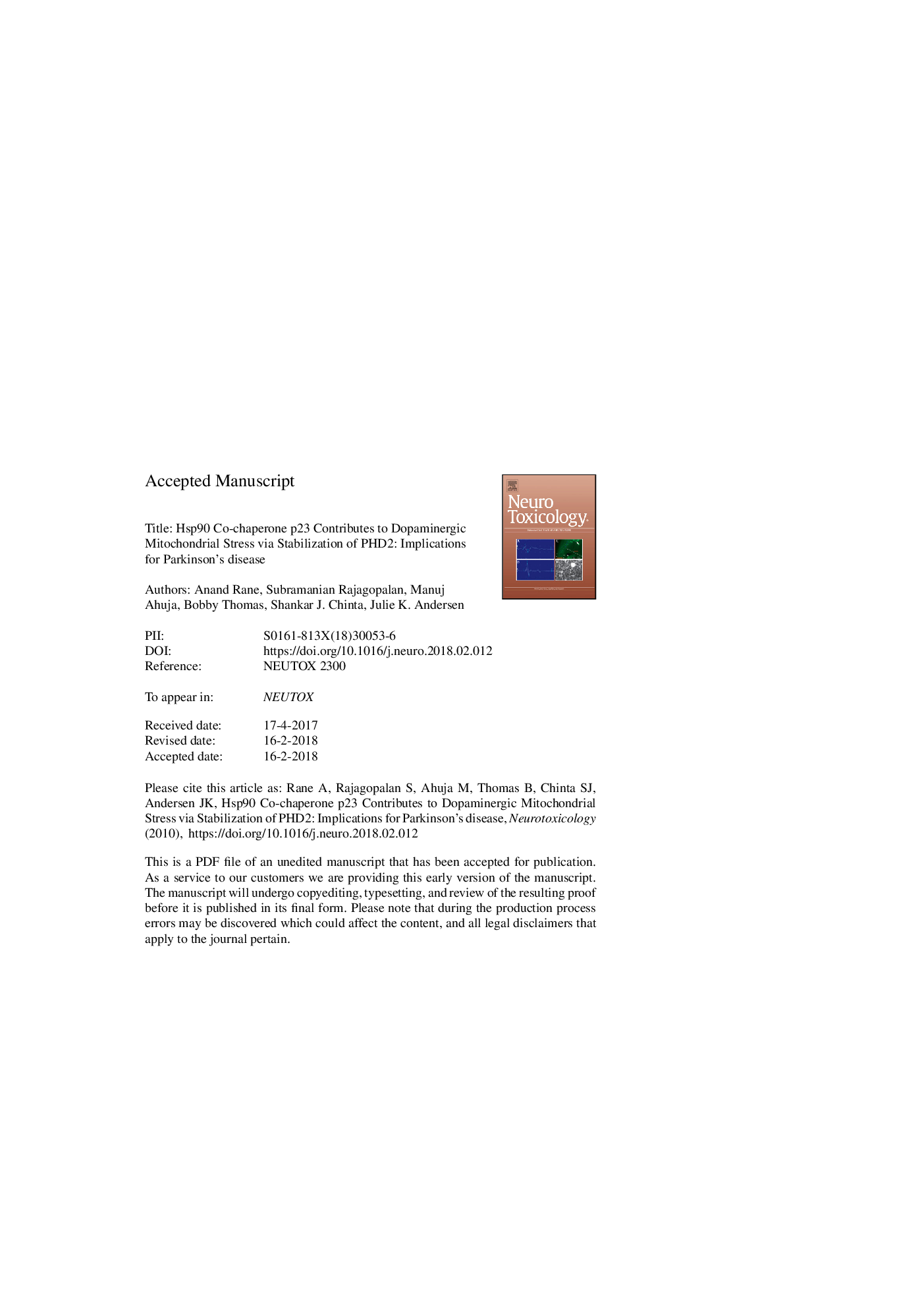| Article ID | Journal | Published Year | Pages | File Type |
|---|---|---|---|---|
| 8550235 | NeuroToxicology | 2018 | 30 Pages |
Abstract
The heat shock factor 90 (hsp90) complex has long been associated with neuropathological phenotypes linked to Parkinson's disease (PD) and its inhibition is neuroprotective in disease models. Hsp90 is conventionally believed to act by suppressing induction of hsp70. Here, we report a novel hsp70-independent mechanism by which Hsp90 may also contribute to PD-associated neuropathology. We previously reported that inhibition of the enzyme prolyl hydroxylase domain 2 (PHD2) in conjunction with increases in hypoxia-inducible factor 1 alpha (HIF1α) results in protection of vulnerable dopaminergic substantia nigra pars compacta (DAergic SNpc) neurons in in vitro and in vivo models of PD. We discovered an increased interaction between PHD2 and the p23:Hsp90 chaperone complex in response to mitochondrial stress elicited by the mitochondrial neurotoxin 1-methyl-4-phenylpyridine (MPP+) within cultured DAergic cells. Genetic p23 knockdown was found to result in decreases in steady-state PHD2 protein and activity and reduced susceptibility to MPP+ neurotoxicity. Administration of the p23 inhibitor gedunin was also neuroprotective in these cells as well as in human induced pluripotent stem cell (iPSC)-derived neurons. Our data suggests that mitochondrial stress-mediated elevations in PHD2 interaction with the p23-hsp90 complex have detrimental effects on the survival of DAergic neurons, while p23 inhibition is neuroprotective. We propose that neurotoxic effects are tied to enhanced PHD2 stabilization by the hsp90-p23 chaperone complex that is abrogated by p23 inhibition. This demonstrates a novel connection between two independent pathways previously linked to PD, hsp90 and PHD2-HIF1α, which could have important implications for here-to-fore unexplored mechanisms underlying PD neuropathology.
Related Topics
Life Sciences
Environmental Science
Health, Toxicology and Mutagenesis
Authors
Anand Rane, Subramanian Rajagopalan, Manuj Ahuja, Bobby Thomas, Shankar J. Chinta, Julie K. Andersen,
